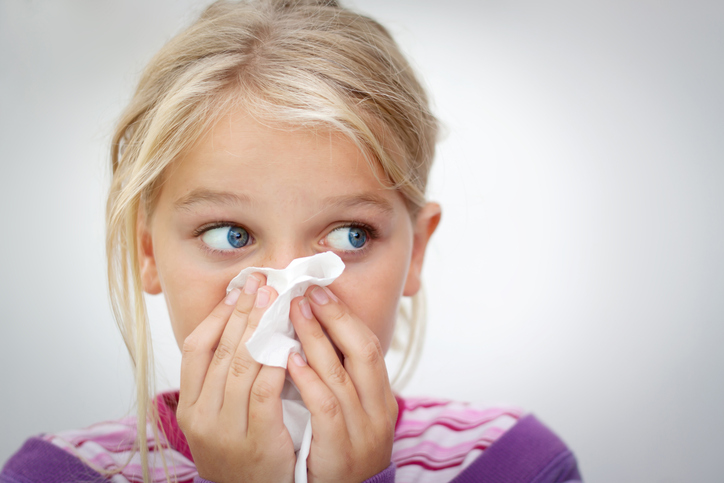
Epistaxis. What causes nosebleeds?
Although they are rather dramatic, nosebleeds are not serious and are easy to treat.
The medical word for haemorrhages originating in the nostrils is epistaxis.
Nosebleeds may occur in the anterior nasal cavity (the outermost) or in the posterior nasal cavity nasopharyngeal region (the pharynx by the nostrils).
Anterior nosebleeds are far more common and less serious. They often involve the capillaries and small blood vessels. In such cases, you can usually stop the bleeding by applying pressure to the nostrils.
Posterior nosebleeds come from larger veins. They are more dramatic, and simple pressure will not suffice to make them stop. If this happens, you must go to the emergency room, where a more effective tamponade will be applied.
Why do we get nosebleeds?
It is the shape and anatomy of the nose that makes it bleed. There are numerous blood vessels inside (which warm and moisten the air we breathe). These veins are very close to the surface, and they are easily damaged.
The air that goes into and out of the nose may dry and irritate the membranes lining the inside, forming scabs which can crack and bleed. This happens when temperatures change, which is why we only tend to have nosebleeds in autumn and winter.
Steps to take in case of a nosebleed
Most nosebleeds are not serious and stop within a few minutes.
- Don’t panic: a nosebleed may look very frightening, but try to keep calm. Most of the time they look worse than they are, and they can almost always be dealt with at home or at work.
- Head forward: Sit or lean forward slightly and keep your head over your heart to reduce the bleeding. This is so that the blood comes out of your nose and does not go down your throat, which could cause nausea or vomiting. Breathe through your mouth.
- Apply pressure with your fingers: Pinch your nose with your thumb and index finger, on the soft part of the nose, just at the end of the hard part that forms the bony bridge. Keep the pressure on until your nose stops bleeding (approximately five minutes). If it keeps bleeding, apply pressure for another ten minutes.
- Apply cold: If the bleeding continues, you can use cold compresses or ice on the bridge of the nose. Once it stops, do not do anything that might make it start again, such as bending forward or blowing your nose.
- Don’t lie down: it is not a good idea to lie down while you are having a nosebleed, because there is a risk that you will swallow blood and block it even more. Avoid breathing in through the nose for a while.
- See a doctor if: the nosebleed lasts more than 15 minutes, because it is sure to have been caused by an injury or a blow. These serious nosebleeds tend to affect elderly people with high blood pressure, arteriosclerosis, coagulation problems, etc. The older the person, the most serious the injury may be.
- Keep your nasal cavities moist: as a preventive measure, we recommend you keep your nasal cavities moist by applying Vaseline with cotton wool, for example, twice a day. Use humidifiers at home to prevent your nose from drying out and encourage optimal breathing.
So, now you know what to do if you have a nosebleed. However, if you don’t manage to stop the bleeding or if you are worried, you should see a health professional.
It is always better to err on the side of caution when it comes to your health.
This post is also available in: Italian
